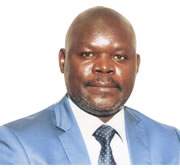RESEARCH PAPER ON TOPVEIN
Human Galectin-9 Is a Potent Mediator of HIV Transcription and Reactivation
Mohamed Abdel-Mohsen, Leonard Chavez, Ravi Tandon, Glen M. Chew, Xutao Deng, Ali Danesh,
Sheila Keating, Marion Lanteri, Michael L. Samuels, Rebecca Hoh, Jonah B. Sacha, Philip J. Norris,
Toshiro Niki, Satish K. Pillai
Published: June 2, 2016 http://dx.doi.org/10.1371/journal.ppat.1005677
Abstract
Identifying host immune determinants governing HIV transcription, latency and infectivity in vivo is critical to developing an HIV cure. Based on our recent finding that the host factor p21 regulates HIV transcription during antiretroviral therapy (ART), and published data demonstrating that the human carbohydrate-binding immunomodulatory protein galectin-9 regulates p21, we hypothesized that galectin-9 modulates HIV transcription. We report that the administration of a recombinant, stable form of galectin-9 (rGal-9) potently reverses HIV latency in vitro in the J-Lat HIV latency model. Furthermore, rGal-9 reverses HIV latency ex vivo in primary CD4+ T cells from HIV-infected, ART-suppressed individuals (p = 0.002), more potently than vorinostat (p = 0.02). rGal-9 co-administration with the latency reversal agent "JQ1", a bromodomain inhibitor, exhibits synergistic activity (p<0.05). rGal-9 signals through N-linked oligosaccharides and O-linked hexasaccharides on the T cell surface, modulating the gene expression levels of key transcription initiation, promoter proximal-pausing, and chromatin remodeling factors that regulate HIV latency. Beyond latent viral reactivation, rGal-9 induces robust expression of the host antiviral deaminase APOBEC3G in vitro and ex vivo(FDR<0.006) and significantly reduces infectivity of progeny virus, decreasing the probability that the HIV reservoir will be replenished when latency is reversed therapeutically. Lastly, endogenous levels of soluble galectin-9 in the plasma of 72 HIV-infected ART-suppressed individuals were associated with levels of HIV RNA in CD4+ T cells (p<0.02) and with the quantity and binding avidity of circulating anti-HIV antibodies (p<0.009), suggesting a role of galectin-9 in regulating HIV transcription and viral production in vivo during therapy. Our data suggest that galectin-9 and the host glycosylation machinery should be explored as foundations for novel HIV cure strategies.
Author Summary
While antiretroviral therapy (ART) has significantly decreased the morbidity and mortality associated with HIV infection, a cure is not achieved due to the persistence of HIV latently-infected cells during treatment. Identifying the principal host immune determinants governing HIV transcription, latency, and infectivity in vivo will be a critical step in developing an effective curative strategy for HIV infection. In this study, we demonstrate that the human immunomodulatory carbohydrate-binding protein galectin-9 is a determinant of HIV latency in HIV-infected individuals on suppressive ART. Administration of galectin-9 potently reactivates latent HIV in CD4+ T cells ex vivo, by signaling through specific glycans on the cell surface to modulate the gene expression levels of key host factors that regulate HIV transcription. Furthermore, galectin-9 induces the host APOBEC3 proteins which lethally mutagenize the HIV genome, attenuating viral infectivity. Our findings reveal a novel biological function of human galectin-9, and demonstrate that host glycans on the surface of infected cells mediate signals that define the transcriptional state and infectivity of HIV. Our findings suggest that galectin-9 and the host glycosylation machinery may be exploited to eradicate the latent HIV reservoir.
CLINICAL STUDIES CONDUCTED ON TOPVEIN:
In an effort to finding an alternative medicine to treat and cure HIV/AIDS with local initiatives, a project spear headed by the President, Dr. Levy P. Mwanawasa, SC. (deceased), the Zambia Government through the Ministry of Health in conjunction with The National AIDS Council, and the Traditional Health Practitioners of Zambia (THPAZ), conducted an Open Observational and Exploratory clinical study for six months between 17th November 2005 and 25th April 2006.
The objectives were:
- To understand the role of traditional medicine in the management of HIV and AIDS in Zambia;
- To evaluate safety and efficacy as well as physical and clinical status of HIV positive clients.
- To evaluate for any spicing with popularly used antiretroviral medicines.
THE ZAMBIAN GOVERNMENT’S REPORT
In responding to a request by Members of Parliament of the Parliamentary Select Committee on Health who requested for an update on the first ever six month Observational clinical trials in Zambia, The Government of the Republic of Zambia represented by His honour the Vice President, Mr. Lupando A.F.K. Mwape, MP; who served under President Dr. Levy Patrick Mwanawasa (deceased), submitted to the nation through Parliament that: after six months of trials on the selected HIV positive clients the Mayeyanin Formula showed positive effects as follows:
SAFETY: No toxic or serious side effects were observed by the remedy. This was demonstrated by the fact that:
- Liver function tests were normal
- Kidney function tests were normal
- Biochemistry of the blood e.g. haemoglobin was normal
EFFICACY: showed positive progress in the following manner:
- Showed that 6 out of 11 (representing 54 per cent) had a reduction in the viral road
- It also showed that 10 out of 11 (representing 99 per cent) had an increase in the CD4 cells
- This is a good achievement and provides hope and encouragement for future development
CLINICAL PICTURE:
- Physical examination and general clinical status as evaluated by the clinicians throughout the study period was physically all right with continued increase in weight being recorded by all clients.
- There were no deaths recorded or serious adverse effects.
CONCLUSIONS:
1. In terms of CD4 cells, it was observed that none of the clients was worse off than when recruited in the study and except in a few circumstances the clients ended with CD4 cells not less than 200 which is the minimum recommended by WHO for initiating therapy.
2. While the study did not observe cure rates after six months, no increase in the viral load were detected but on the contrary significant reduction in viral load were achieved, which in terms of the various constraints such as dealing with crude extracts and dosages which are not determined by the Traditional Health Practitioners whose measurements are not very accurate, is impressive.
3. The study is hailed and can be developed further now that it is proven that the herbal remedy is safe. The clients on this medication who are doing reasonably well should continue with three months assessments.
4. There is need to conduct a larger group trial with proper controls.
5. The programme on the herbal gardens project will now commence after having conducted these clinical trials.
And to formerly recognise and adopt this medicine, the Government of the Republic of Zambia produced a confidential report code named “ACTION-TAKEN REPORT” through the committee on Health, Community Development and Social Welfare which was presented to Parliament by his Honour, then Vice President to President Mwanawasa, Mr. Lupando A.F.K. Mwape, MP, for the 5th session of the 9th National Assembly appointed on 19th January, 2006 and adopted on the 9th June, 2006.
SUMMARY STUDY REPORT FROM CHINA:
The second clinical study was done in China under the auspices of The Department of Biochemistry, Faculty of Medicine, The Chinese University of Hong Kong, Hong Kong, Shatin, New Territories under the title: Purification of a trypsin-stable lectin with antiproliferative and HIV-1 reverse transcriptase inhibitory activity / Biochemical and Biophysical Research Communications • Volume 301, Issue 2, 7 February 2003, Pages 545-550 / doi: 10.1016/S0006-291X (02)03080-2.
ABSTRACT:
A lectin, with a molecular mass of approximately 60 kDa and two different subunits exhibiting an N-terminal sequence manifesting considerable homology to phytohemagglutinin from Phaseolus species, was isolated from the plants in Topvein.
The lectin was unique in hemagglutinating activity was inhibited by polygalacturonic acid and not by galacturonic acid and other simple monosaccharides. The lectin was isolated by affinity chromatography on Affi-gel blue gel, ion exchange chromatography by fast protein liquid chromatography (FPLC) on Mono S, and gel filtration by FPLC on Superdex 75.
It was adsorbed on both Affi-gel blue gel and Mono S. Ground bean lectin exhibited mitogenic activity on murine splenocytes with the maximal response achieved at a concentration of 156 nM, as similar to the dose required for Con A.
The viability of hepatoma (HepG2), leukemia (L1210), and leukemia (M1) cells was reduced in the presence of ground bean lectin, which also exerted an inhibitory activity toward HIV-1 reverse transcriptase IC(50) of 73 microM. The hemagglutinating activity of the lectin was unaffected by trypsinization and the presence of a number of divalent cations, but was augmented by 500 mMK(+) ions. The activity was unstable above 40 degrees C although some activity remained after heating and at 100 degrees C for 30s.
SUMMARY STUDY REPORT FROM THE PHILIPPINES:
The third clinical study was done in the Philippines under The Philippines Alternative Medicines, with similar medical conclusions as follows:
• Antiproliferative / HIV-1 Reverse Transcriptase Inhibitor Activity: A lectin with a unique hemagglutinating activity was isolated from Vignasesquipedalis CV ground bean. The ground bean lectin exhibited mitogenic activity on murine splenocytes. The viability of hepatoma (HepG2), leukemia (L1210 and M1) cells was reduced in the presence of ground bean lectin while also exerting an inhibitory activity toward HIV-1 reverse transcriptase IC50.
• Lipids / Phytoconstituents: Dried edible seeds of six varieties of V unguiculata and two of P vulgaris were analyzed for chemical constituents. The paper highlights safety and nutritive values. Some composition values for VU were: protein 20.5-31%, fat 1.14-3.03%, fiber 1.70 -4.5%, carbohydrate 56-65.7%. Potassium was the most abundant element in the seeds.
SUMMARY STUDY REPORT FROM NIGERIA:
The fourth clinical study was done in Nigeria under the title: Lipids and other constituents of Vignaunguiculata and Phaseolus vulgaris grown in northern Nigeria /A Onwuliri and J A Obu / Food Chemistry • Volume 78, Issue 1, July 2002, Pages 1-7 • doi:10.1016/S0308-8146(00)00293-4.


